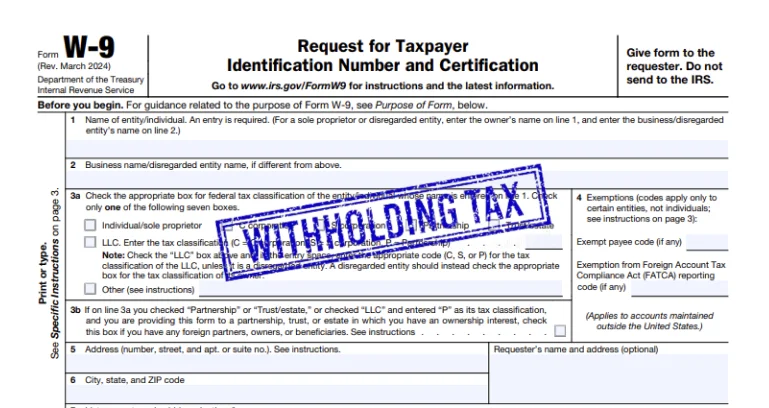Request your First W-9 Form for FREE!
Backup Withholding - An Overview
Updated on March 21, 2024 - 10:30 AM by Admin, TaxBandits
When you request w9 Online from your payee to file an information return to the IRS, and they either fail to provide this information or give an incorrect TIN, or if they indicate that they are subject to backup withholding, this point is where some payers become confused. They wonder how they should proceed, this is where backup withholding becomes a requirement.
Backup withholding is a complex topic, and getting it right as the payer is crucial to avoiding stress and form rejections when the year-end IRS filing deadlines come around. Here’s what all payers should be aware of when it comes to backup withholding.
The following topics are covered in this:
1. What is Backup withholding?
By IRS definition, backup withholding requires payers to withhold tax from payments that would otherwise not be subject to withholding. This mainly takes effect when the payee fails to provide a correct TIN, however this can also take effect when an individual fails to report dividends or interest.
2. When is backup withholding applied?
This mainly takes effect when the payee fails to provide a correct TIN, however this can also take effect when an individual fails to report dividends or interest.
Backup withholding can be applied to most payments reported on the
Form 1099 series.
3. How does backup withholding work?
When a payee fails to provide their TIN, which is usually requested using Form W-9, backup withholding is initiated. The payer will begin to withhold 24% of the payments made to this independent contractor or vendor. This 24% withholding is then deposited to the IRS. The payer will also be required to file Form 945. This will continue until the independent contractor or vendor provides their payer with their correct TIN.
4. What happens when IRS Backup Withholding tax is overpaid?
If the IRS backup withholding is overpaid, the payee can report this overpayment on their personal taxes and receive a refund from the IRS.
5. How to prevent or stop backup withholding?
The best practice for preventing the hassle that comes with backup withholding is by requesting an
IRS Form W-9 from every new independent contractor or vendor that you begin to do business with. Form W-9 is an IRS form that is designed to capture the information you will need on record to conduct a working relationship with your new independent contractor or vendor.
For example, W-9 Form requires the payee to enter their legal name, address, and TIN. This is incredibly important for payers to have on file. When it comes time to file a 1099 at the end of the year, not only will you have the independent contractor’s correct TIN, but you will have the correct address where you will mail their recipient copy.

Note: If you are a payee, you can directly complete and share your W9s with your payers and avoid backup withholding. Click here to learn more information about
Fillable W-9.
6. How to apply Credit for IRS Backup Withholding?
When Payees notice that their payment has been subject to IRS backup withholding on their Form 1099, they should report this amount as federal income tax withheld when filing their personal income taxes for the year in which the payment was made.
